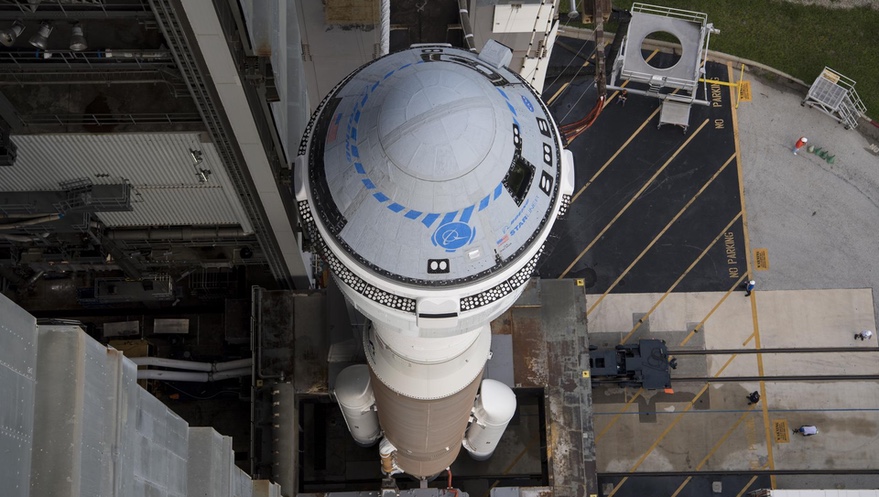WASHINGTON — Boeing is continuing its investigation into the thruster issue that delayed the launch of its CST-100 Starliner commercial crew vehicle but could soon run into schedule conflicts on both the International Space Station and with its launch vehicle.
In an Aug. 6 statement, Boeing said it was continuing to study why several valves in the propulsion system of the spacecraft were unexpectedly in the closed position during the countdown to the Aug. 3 launch attempt of the Orbital Flight Test (OFT) 2 mission, an uncrewed test flight. Boeing scrubbed the launch about three hours before the scheduled liftoff because of the problem.
The Starliner, atop its Atlas 5 rocket, is back in the Vertical Integration Facility (VIF) at Space Launch Complex 41 at Cape Canaveral, allowing engineers access to the spacecraft. They were able to open some valves by issuing a new set of commands.
“Cautiously optimistic is a good way to describe how the team is feeling,” John Vollmer, Boeing vice president and commercial crew program manager, said in a statement.
What caused the valves to malfunction isn’t clear, although Boeing said in an earlier statement that they had ruled out software problems. One possibility is damage such as water intrusion during a severe thunderstorm shortly after the rocket was rolled out to the pad Aug. 2.
Neither NASA nor Boeing have set a new launch date for the OFT-2 mission. Boeing said in its statement that it is “assessing multiple launch opportunities for Starliner in August” and will work with NASA and United Launch Alliance to determine an appropriate launch date.
NASA, in its own statement Aug. 6, said it and Boeing “will continue to evaluate schedules based on where the troubleshooting efforts take them before deciding when the next official launch for the OFT-2 mission will take place.”
A combination of factors could force an extended delay if the OFT-2 mission does not launch by late August. A Falcon 9 is scheduled to launch the CRS-23 cargo mission to the ISS Aug. 28. It will use the same docking port as Starliner will for OFT-2, meaning that if OFT-2 does not complete its mission by late August, NASA will either have to postpone CRS-23 or wait until that mission is done, likely no earlier than late September.
By that point, however, ULA will need to focus on preparations for its next Atlas 5 launch, NASA’s Lucy asteroid mission. That mission has a three-week launch window that opens in mid-October. The Atlas 5 for OFT-2 would have to be “de-stacked” and the one for Lucy assembled in the VIF, with the spacecraft then installed and tested. Given the narrow window for Lucy, additional testing of the vehicle is likely to find any problems well ahead of the opening of the launch window.
An additional complication is that this will be taking place during the height of the tropical weather season, with the potential for tropical storms and hurricanes delaying launches or launch preparations by days.
If OFT-2 does not launch by the time its Atlas 5 needs to be de-stacked to prepare for the Lucy mission, the next opportunity may not be until November, after the SpaceX Crew Dragon Crew-3 mission launches at the end of October and the Crew-2 mission returns home, freeing up a docking port for Starliner.
